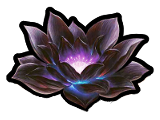Rarity refers to the distribution of cards in Magic boosters. Magic has common (C), uncommon (U), rare (R) and mythic rare (M or MR) cards. Basic lands technically have their own rarity (L), but are often marked as common.[1] The latter also applies to special cards (S)[2] and tokens (T)[3][4].
Description[ | ]
Rarity defines the scarcity of cards in boosters, and indicates complexity, but not the quality of the card, although rarer cards are sometimes more powerful and more highly sought after. Rares can generally be said to be more complex, but not necessarily better, than commons.[5][6]
History[ | ]
The earliest expansions were packaged in 8-card booster packs that usually contain 6 commons and 2 uncommons (there were no rares back then). A few expansions were packaged in 12-card booster packs that usually contain 9 commons, 2 uncommons and 1 rare. Since Mirage, most expansions were packaged in 15-card booster packs that usually contain 11 commons, 3 uncommons and 1 rare. One exception to this is Time Spiral, where the 15-card boosters include 10 commons, 3 uncommons, 1 rare and 1 Timeshifted card.
Since the Exodus expansion the rarity of a card has been identified by the color of the expansion symbol. Up until that point, you had to learn rarity from card lists. One of the most important things about trading in the early days was being aware of what rarity each card was.[7] Common cards use a black-filled expansion symbol, except in the Coldsnap and Dominaria expansions where a white symbol is used. Uncommon cards use a solid silver- or black-to-white fade-filled expansion symbol. Rare cards use a gold-filled expansion symbol. Mythic rare is recognized by the orange / rose-gold color. Cards in Time Spiral's timeshifted subset use a purple expansion symbol.
It is known that expansions through Alliances, excluding Ice Age, had some common and uncommon cards that were actually more prevalent than others. This was the result of some cards appearing more often than others on the printer's sheet of uncut cards. For example, Headless Horseman is a C1 common, and Ghosts of the Damned is a C2 common. This code represents the number of times the card appears on the common printer's sheet of uncut cards, making C2 commons twice as abundant as C1 commons.[8]
As of Shards of Alara, there is a 1 in 8 chance that a rare in a booster pack is replaced by a 'Mythic Rare'.[9][10]
As of Kaladesh, roughly 1 out of every 144 boosters contains a Masterpiece (technically 1:2,160 cards).[11] Masterpieces are versions that also appear at another rarity.
Trivia[ | ]
As of Ponies: The Galloping, there is a silver-bordered mythic card called Rarity.
References[ | ]
- ↑ Mark Rosewater (July 20, 2020). "Since the Jumpstart basics are one-per-pack, why do they still count as common?". Blogatog. Tumblr.
- ↑ Gavin Verhey (August 22, 2020). "Prismatic Piper for Pauper Variant!". Twitter.
- ↑ Mark Rosewater (October 18, 2015). "Are some tokens rarer than others?". Blogatog. Tumblr.
- ↑ Token Rarity in DOM, M19, GRN, BBD, UMA (Reddit)
- ↑ Mark Rosewater (February 25, 2002). "Rare, but Well Done". magicthegathering.com. Wizards of the Coast.
- ↑ Mark Rosewater (March 12, 2018). "Quiet the Rarity". magicthegathering.com. Wizards of the Coast.
- ↑ Mark Rosewater (August 17, 2009). "In My Day". magicthegathering.com. Wizards of the Coast.
- ↑ Matt Place (September 17, 2003). "Ask Wizards: question about the rarity of cards from old sets.". magicthegathering.com. Wizards of the Coast.
- ↑ Mark Rosewater (June 2, 2008). "The Year of Living Changerously". magicthegathering.com. Wizards of the Coast.
- ↑ Wizards of the Coast (June 2, 2008). "Changes as of Shards of Alara". magicthegathering.com. Wizards of the Coast.
- ↑ Mark Rosewater (September 12, 2016). "Masterpiece Series". magicthegathering.com. Wizards of the Coast.
